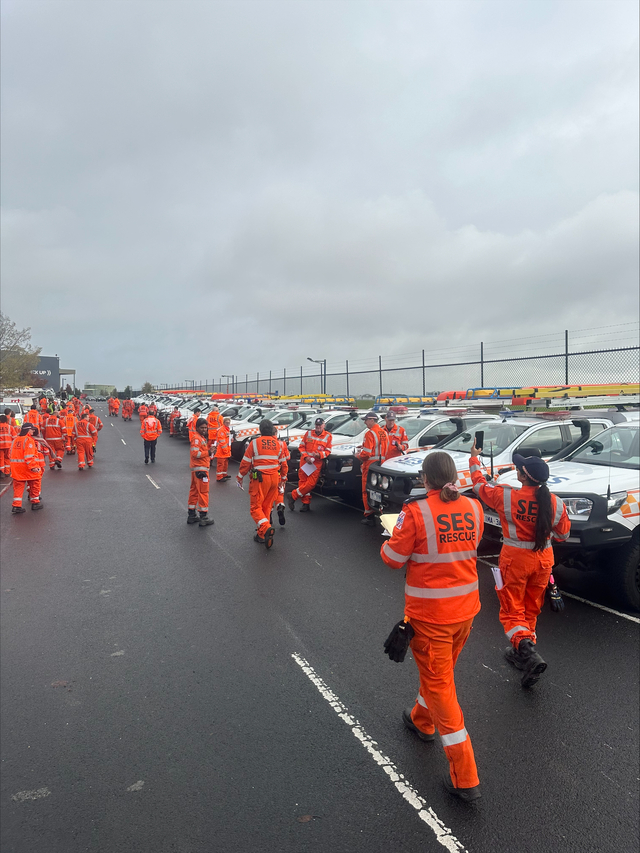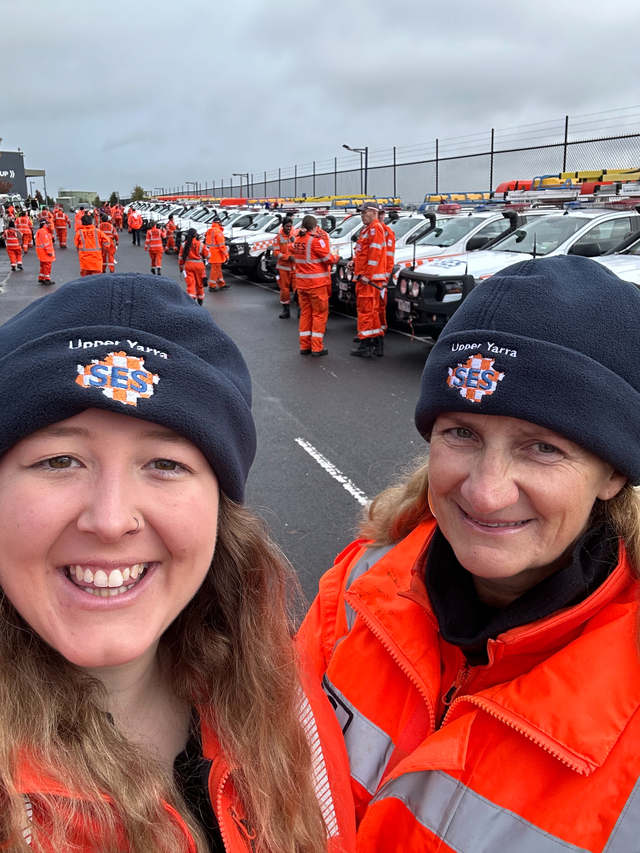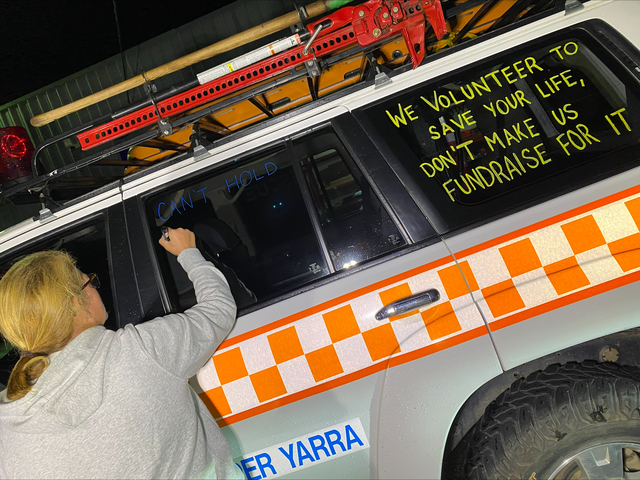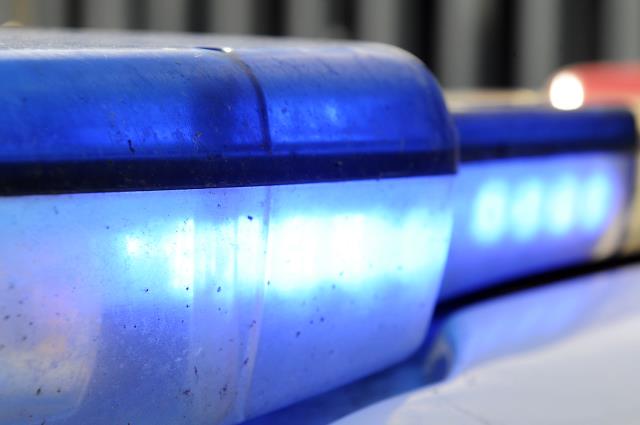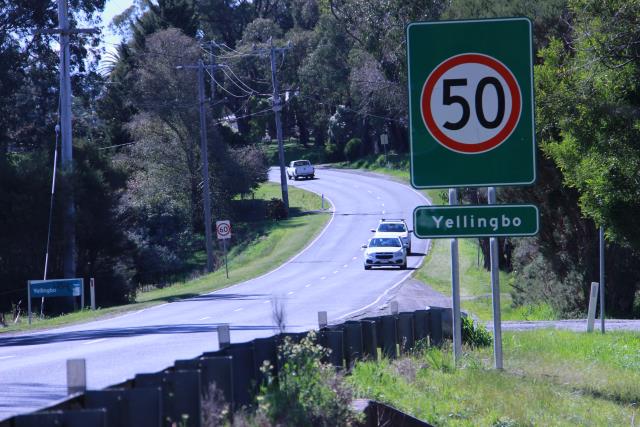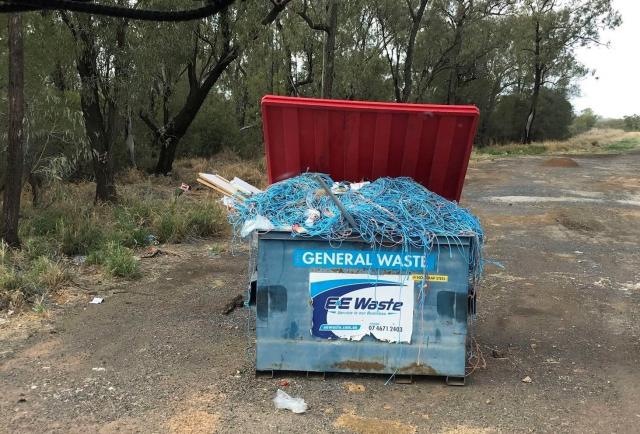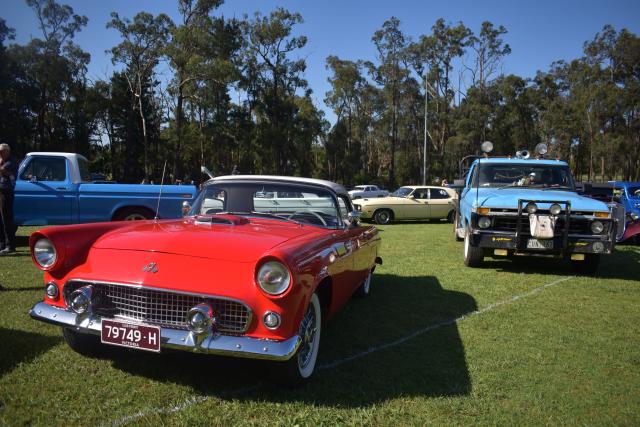As Wear Orange Wednesday rolled around on Wednesday 22 May 2024, SES crews across the state are calling for more support.
A convoy of SES vehicles took to the Bolte Bridge on Monday 20 May, making up just a small portion of the vehicles that need to be purchased, maintained and equipped by crews.
SES volunteers are calling for more funding, as current subsidies and rising costs are hitting hard.
Upper Yarra SES Unit Controller Hannah Brunton said the current funding model for VICSES is not sustainable for the costs of the services that they provide and relies heavily on volunteer-led fundraising.
“Many people assume that VICSES receive funding from the Fire Services Levy however this is not the case, the current Fire Services Levy works really well for the Fire Services, and we obviously support it and are not seeking a reduction in funding provided to our fire emergency service colleagues – we work with them and support the valuable work they do,” she said.
“Many people do not realise how little funding we actually receive or how far this goes. Using Upper Yarra as an example, we have five vehicles, one rescue truck which is state-funded and four other vehicles which are unit-funded and each vehicle that a unit funds needs to be fitted out with equipment such as radios and emergency lights as well as retrofitted for operational usage to include storage to safely stow our equipment,”
“Each vehicle can easily cost in excess of $100,000 and we have to replace them every 10 years so for argument’s sake (without application of grants) let’s say four vehicles at $100,000 each, is $400,000 to outlay within that 10 year span meaning $40,000 per year is what we need to save to achieve these vehicle purchases. The subsidy we receive is less than this so we immediately start in the red.”
The cost of fuel, vehicle maintenance, equipment maintenance, equipment replacement, consumable items and utilities are all further expenses SES units either have to pay for or apply for grants to cover.
Ms Brunton said VICSES has observed a significant uptick in assistance requests, marking the past three years as the busiest in our history.
“Staff who work at region and state levels are hugely overstretched which obviously has a huge impact on them but also has a knock-on effect on volunteers in so many ways. It can mean we may not always get assistance from staff when it’s required in the timeframes that we need or they put themselves out to make themselves available to us, at a detriment to themselves,” she said.
“It also means our training opportunities are reduced. Available spaces on training courses are limited, it is not uncommon for a volunteer to get rejected from a training course multiple times due to limited spaces, which obviously impacts volunteer retention,”
“Courses may have eight-20 spaces available yet have 50-100 plus applicants across the state but training isn’t an optional extra, volunteers need these skills to be able to assist the community when required.”
Brigades in the Outer East have attempted to combat the difficulty accessing training by holding courses in-house. The Upper Yarra, Healesville and Emerald units recently ran two courses on road crash rescue, facilitated by a volunteer trainer from Upper Yarra, Matt, a volunteer trainer from Emerald, Lachie and a volunteer Assessor from Emerald, Phil who solely organised and ran the course to help eight members across the three units become newly accredited Road Rescue operators.
Ms Bruonton said SES is the control agency for flood, storm, tsunami, landslip, and earthquake which make up such a huge portion of natural events that emergency services respond to, while also being a primary road rescue provider.
“SES also often assist fire services, usually within Incident Control Centres or staging areas during bushfire events and high-risk days,” she said.
“It is very common for SES to assist Ambulance Victoria with the extraction of patients in situations in which paramedics cannot easily access the patient such as due to arduous terrain or the patient’s physical location,”
“Victoria Police request assistance from SES to provide people-power in searches for missing people or crime scene evidence as well as protecting crime scenes from the elements and public visibility.”
About 200 SES volunteers turned out for the convoy over the Bolte Bridge.
Ms Brunton said it was a big moment and the atmosphere of the group was electric.
“I am always grateful to be a volunteer and proud of everything our members achieve but being part of that convoy was bloody moving, seeing the effort that volunteers put in to organise it all and make it run so seamlessly was impressive and inspiring,” she said.
“I can’t even find the right words, it was overwhelming and wholesome and powerful, so powerful.”
SES crews are calling for the Victorian Government to either increase the funding for the Fire Services Levy and expand it to become an Emergency Services Levy or to establish a separate levy altogether.
Ms Brunton said this isn’t just a case of volunteers sooking and crying poor, they are just so frustrated and tired of being treated like the ‘poor cousin’ of the emergency services.
“We more than earn the funding we are requesting, we aren’t asking for funding for us, we are asking for funding for the sake of our communities because at the end of the day, without sustainable funding, it’s the community who suffer,” she said.
“And it shouldn’t be up to the community to put their hand in their own pockets to donate when they see us begging on a street corner.”
Anyone wishing to support the push can visit fundvicses.org where there is a link to contact local parliamentarians with a pre-formed editable letter or follow ‘Fund Victoria State Emergency Service’ on Facebook and Instagram to stay up to date and share the campaign on social media.
In response to a lack of funding for SES in the recent State budget, Eildon MP Cindy McLeish called on the Victorian government to address the lack of funding and said local units had been under significant pressure in recent months, with volunteers being called out for incredibly difficult situations.
“In towns across my electorate, the local SES units have been at the forefront of all recovery efforts, from floods, storms, power outages, and car accidents,” she said.
“These are men and women who volunteer their time, often, in small towns they are the first responders to accidents involving neighbours, family, friends – this is an incredibly tough role for these volunteers.”

